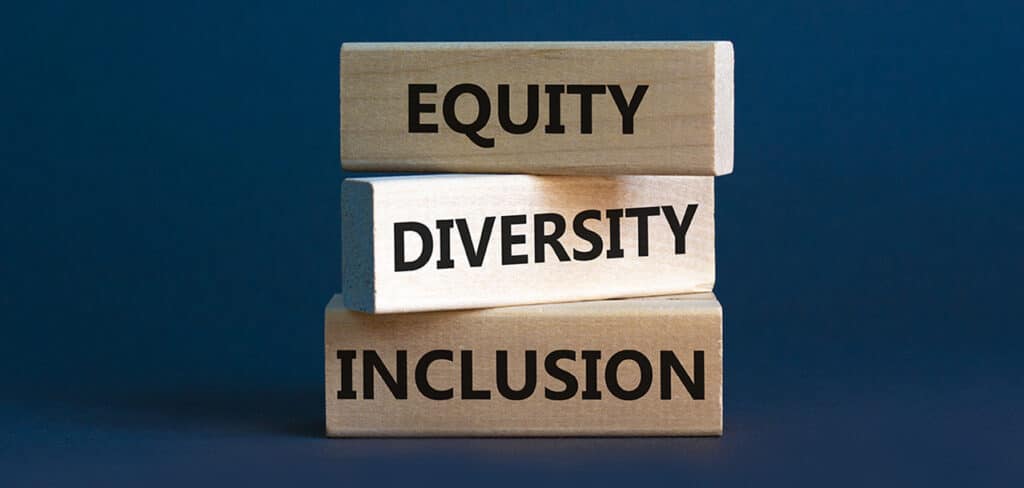
It’s a common belief that achieving success in our careers or personal lives will lead to greater happiness and life satisfaction. However, social and developmental psychology research has shown that this is not always the case. In fact, the correlation between achievement and happiness is often weak or non-existent. (Diener & Seligman, 2002).
Success at a cost
One reason for this is that achievement is often accompanied by pressure, stress, and anxiety. High achievers may feel that they are constantly under scrutiny and must maintain their success in order to be seen as valuable or worthy. This pressure can lead to burnout, emotional exhaustion, and a sense of emptiness or lack of fulfilment (Curnow, 2019).
For example, Olympic gold medalist Michael Phelps achieved unprecedented success in his swimming career but struggled with depression and suicidal thoughts. Phelps stated in an interview with CNN (2018) that he had achieved everything he had ever wanted in his swimming career, but he still felt empty and lost. Similarly, billionaire entrepreneur Elon Musk has reported feeling depressed despite his many accomplishments. Musk once tweeted, “The reality is great highs, terrible lows and unrelenting stress. Don’t think people want to hear about the last two.”
Mindset and habits
These anecdotes are supported by cognitive and behavioural psychology research, which suggests that our level of happiness is influenced more by our mindset and daily habits than by external factors such as achievement or material possessions (Lyubomirsky, Sheldon, & Schkade, 2005). Studies have shown that individuals who practice gratitude, mindfulness, and social connection tend to report higher levels of life satisfaction, regardless of their achievements (Lyubomirsky, 2013).
Social support and emotional stability
One study by King and Hicks (2007) found that life satisfaction was positively correlated with social support and emotional stability, but was negatively correlated with ambition and achievement. The researchers suggested that high-achieving individuals may prioritise their goals over their relationships, leading to a sense of isolation or disconnection.
Conclusion
In conclusion, while achievement can certainly bring a sense of accomplishment and pride, it’s important to recognise that it doesn’t necessarily guarantee happiness. The pressure and stress that often accompany achievement can lead to feelings of emptiness or lack of fulfilment. It’s important to focus on cultivating positive habits and a healthy mindset in order to lead a fulfilling and satisfying life, regardless of external accomplishments.
References:
Curnow, T. (2019). The dangers of high achievement: How success can lead to burnout. Psychology Today. Retrieved from https://www.psychologytoday.com/gb/blog/the-couch/201904/the-dangers-high-achievement-how-success-can-lead-burnout
Diener, E., & Seligman, M. E. (2002). Very happy people. Psychological Science, 13(1), 81-84.

The campaign of SNP leadership hopeful Kate Forbes came off the rails in February when her views on marriage equality, steeped in her deep evangelical faith and considered antiquated by much of today’s society, led people to argue that she could not be elected to govern a country like Scotland, whose values are so starkly unaligned with her own.
Subsequent discussions around Forbes’ views and the effect they have had on her leadership bid have divided commentators. Some proclaim the backlash to be a form of religious intolerance, a further example of ‘cancel culture’ orchestrated by an overzealous woke mob, narrowing the ideological field and denying a plurality of thought in public life. Others have simply assessed that Forbes is entitled to her views but that, in a democratic system, possessing views that are plainly at odds with the majority of her would-be constituents was always likely to have a negative political impact – that she is entitled to her faith, just as those who disagree with her are entitled to lend their votes elsewhere.
Regardless of where you stand, the issue raises interesting questions around the role of diversity of thought in leadership, whether ideological clashes in the workplace are possible, and whether they can potentially even be beneficial.
Diversity in the workplace
“The chains of habits are too light to be felt until they are too heavy to be broken.”[1] This saying – attributed by some to Samuel Johnson, by others to Bertrand Russell – is apt when it comes to diversity in the workplace. Far too late in the day, employers realised that their workforces were stiflingly homogenous, most especially when it came to race and gender. Recent cultural reckonings have set the wheels in motion for change in that regard, with a newfound urgency placed on ensuring workplaces represent a wider spectrum of society. The benefits of those changes on a social level are obvious. But the benefits to businesses are too.
Research shows that companies with diversity outperform the competition by 35%[2] and are 70% more likely to capture new markets [3]. While diverse teams are 87% better at making decisions [4], and diverse management teams lead to 19% higher revenue. [5] In other words, if you want a more successful business, you want a more diverse team.
Business leaders need to possess cultural competence to ensure they’re managing these diverse teams correctly. Cultural competence is defined as “the ability to understand, appreciate, and interact with people from cultures or belief systems different from one’s own.” [6] People of different cultures and backgrounds – be they ethnic, religious, economic, gender or sexuality based differences – naturally bring their life experience to their role, and offer a distinct viewpoint characterised by that experience.
A culturally competent leader knows how to balance those wide-ranging viewpoints and use them to drive innovation, productivity and engagement. But while having differing perspectives offers clear benefits in terms of a widening the thought pool, it also has the potential to engineer greater levels of conflict, with these sometimes clashing opinions or ideologies going head to head. How can businesses ensure (sometimes vehement) differences of opinion lead to innovation, not ruptures?
The role of conflict in the workplace
A lot of people are uncomfortable with conflict, especially in the workplace. They don’t want to come across as aggressive or obstinate, or be labelled with that most unshakeable of reputations: “difficult”. But that relationship to conflict is flawed, built on the premise that conflict must always be in some way negative, that there must be a winner and a loser, and you don’t want to be the latter. But conflict that stems from a positive place and is well managed offers far more advantages than disadvantages.
Creative friction and stress-testing ideas results in superior quality output. As Liane Davey, author of You First: Inspire Your Team to Grow Up, Get Along, and Get Stuff Done notes, “Conflict allows the team to come to terms with difficult situations, to synthesize diverse perspectives, and to make sure solutions are well thought-out.” Adding, “Conflict is uncomfortable, but it is the source of true innovation, and also a critical process in identifying and mitigating risks.” [7]
The way conflict is handled is obviously crucial to how your team functions. If your colleagues are obstinate, only looking to put their own point across and battling for it to win as a sign of their corporate supremacy, you’re doomed. But if everyone around the table is willing to listen to other ideas, willing to challenge them and willing to be challenged in turn, then not only will the standard of ideas improve, as it’s being assessed from a wider variety of angles and facing up to more prominent scrutiny, but relationships amongst the team will improve too. Instil a culture where colleagues can disagree in the boardroom but know that each of their ideas are being heard and that they can all head out for drinks later with no hard feelings, and there’s no telling how vast the improvements in your employees’ performance and mood will be.
Diversity of ideas
As well as the obvious need for diversity in more overt and definable areas like race and gender, it’s also important to employ a diverse spectrum of ideas. A racially diverse company made up of entirely the same cultural or political leanings can lead to a homogeneity of thought that proves restrictive. The need to employ workers whose views oppose our own can be an uncomfortable idea, as we tend to feel more at ease around like-minded personnel. But as Dr. Katherine Phillips notes in UC Berkeley’s Greater Good Magazine, “When disagreement comes from a socially different person, we are prompted to work harder. Diversity jolts us into cognitive action in ways that homogeneity simply does not.”[8] Research shows that homogenous groups are more confident in their performance, but that diverse groups are more successful in completing tasks. [9]
Ensuring a business contains diversity of thought falls on the boss’ shoulders. As a paper exploring ways of harnessing plurality of thought in the digital age notes, “In a boss/subordinate culture, toeing the boss’s line is a given, and alignment of thought is subtly encouraged and rewarded.”[10] The danger is that managers tend to prefer ideas that echo their own. A suggested solution for this is to – on top of ensuring your team has a plurality of thought, including potential contrarians – use what engineers call the failure mode effects analysis (FMEA). FMEA works by identifying and exploring the potential ways a new idea or system may fail, rather than purely assessing its positives. This can go against our natural instincts, especially if it’s an idea we’re passionate about, but forcing ourselves and those around us to search for the negatives in even our best ideas is a useful tool to ensure the idea stands up to scrutiny, as well as helping to normalise the practice of challenging all ideas on a meritocratic basis. Research has found that a strong, homogeneous culture can stifle natural cognitive diversity due to the pressure to conform. [11] A good manager will foster an environment where all thoughts – including and especially ones diametrically opposed to their own – are given a chance to be heard.
Conclusion
Diverse workplaces have greater levels of success because they produce a greater plurality of thought. A company culture that encourages employees to challenge ideas in a healthy and constructive way – and provides a platform for a whole spectrum of viewpoints – allows for enhanced creativity and innovation. It’s the right thing to do from an equality standpoint, it’s best for business, and it helps engender employees with a healthier relationship to conflict.
References
3 https://hbr.org/2013/12/how-diversity-can-drive-innovation
4 https://www.peoplemanagement.co.uk/experts/research/diversity-drives-better-decisions
5 https://www.bcg.com/en-us/publications/2018/how-diverse-leadership-teams-boost-innovation.aspx
6 https://hbr.org/2021/12/are-you-prepared-to-lead-a-diverse-team
7 https://hbr.org/2018/01/why-we-should-be-disagreeing-more-at-work
9 https://hbr.org/2018/01/why-we-should-be-disagreeing-more-at-work
11 https://www.cultureamp.com/blog/benefits-diversity-in-workplace

What does it mean for a person to function at their peak? Peak performance means that all basic needs are met so the mind and body are nourished, which allows for the highest level of success. It’s about long-term, consistent, and sustainable growth.
Often, peak performance is a term used in the athletics world. Athletes are in a constant cycle of training and recovery, learning their body’s cues in order to perform their best in matches or competitions. But the same mentality and techniques can be applied to entrepreneurship, the business world, or to anyone who is striving to live their best life. Superhuman status is not just for the elite.
“Peak performance in life isn’t about succeeding all the time or even being happy all the time. It’s often about compensating, adjusting, and doing the best you can with what you have right now.” — Ken Ravizza, Sport Psychologist
Ken Ravizza, Sport Psychologist
The power of the to-do list
It may seem simple, but one way to achieve peak function is by writing down goals and to-do lists for accountability. The goals should be SMART goals: specific, measurable, actionable, relevant, and time-bound. But a to-do list can include everything from long-term planning to what to accomplish before breakfast the next day. To-do lists help to organise the mind in a more linear fashion and create space to focus on the present moment rather than stressing about what’s to come.
It is also important to not rigidly adhere to a to-do list. Psychologists have found that a growth mindset is more indicative of long-term success and motivation. Part of being a highly successful person is learning to adapt to the inevitable fluctuations of life.
Mindfulness & mental health
Mindfulness and meditation can help with stress and the ability to remain calm under pressure. Prioritising mental health is equally important as physical health and the items on a to-do list. Goals are important, but they also need to be sustainable.
In fact, in a study in The Journal of Cognitive Enhancement, athletes who performed just twelve minutes of meditation a day showed higher mental resilience than those who didn’t. They also had more improved focus during training. Rest and recovery can often seem counterintuitive when schedules are jam-packed and the lists endless, but ultimately, taking the time to be present and slow down will lead to more effective results.
Diet, nutrition & sleep
A healthy diet, nutrition, and adequate sleep are essential to achieve peak performance. Sleep debt — fewer than seven hours of sleep — may be an ‘unrecognised, but likely critical factor in reaching peak performance’, says Cheri Mah, researcher at the Stanford Sleep Disorder Clinic and Research Laboratory. There is a strong correlation between diet and nutrition and quality of sleep. For example, sugar, caffeine, and alcohol negatively impact sleep, whereas eating a Mediterranean diet, and a diet high in Omega fatty acids, may lead to more restful sleep (Godos et al., 2019).
Many high performers work around their ‘peak performance hours’, which is the time of day when a person is most efficient based on the body’s chronotype and circadian rhythms. In other words, knowing whether one is a night owl, or a morning bird can help determine the day’s structure for optimal success.
The importance of deep work & flow
Lastly, the ability to be in flow is not only a factor in success but also happiness and overall life satisfaction. ‘Flow’, a term first coined by positive psychologist, Mihaly Csikszentmihalyi, refers to being completely immersed in the task at hand. It can be achieved by avoiding multitasking, focusing on quality of the work rather than doing as many things as fast as possible, and by doing a task that is enjoyable.
In the book, The Leading Brain: Powerful Science-Based Strategies for Achieving Peak Performance, the authors explain that optimal focus also requires some level of stress. Too much stress will inhibit focus, and too little leads to a lack of motivation. To achieve deep flow, then, there needs to be some sense of urgency in the work. There needs to be a purpose driving the task.
Conclusion:
Peak performance is not achieved overnight. It requires consistent practice, having clear goals, and holding oneself accountable, while also maintaining a healthy and balanced lifestyle. Anyone can achieve peak performance and success by implementing the right habits.
More on sleep
- “Studies show that reducing sleep by as little as 1.5 hours for even a single night could cause a reduction of daytime alertness by as much as 32 percent, while also doubling the person’s risk of sustaining an occupational injury.” (Read more)
- The Power of Sleep: Unlocking the Secrets to Success with Elite Sports Sleep Coach Nick Littlehales
- Cracking The Performance Code with Justin Roethlingshoefer
- Performance improvement lessons from leading sleep expert Pat Byrne
- The impact of sleep on performance with Motty Varghese